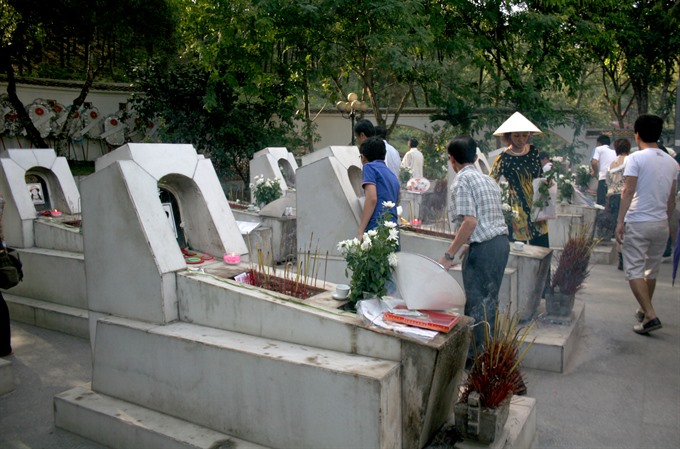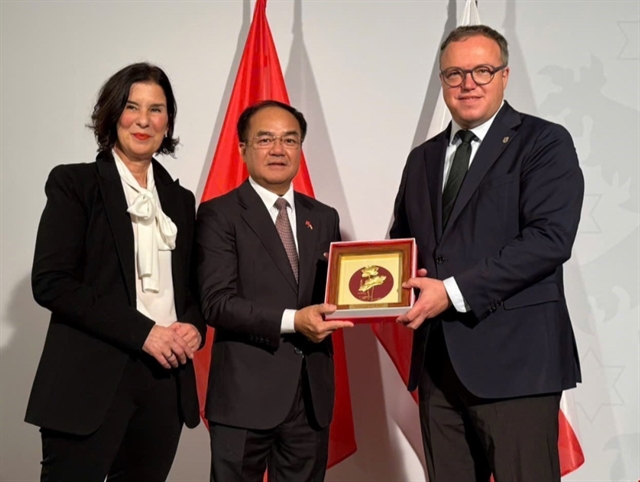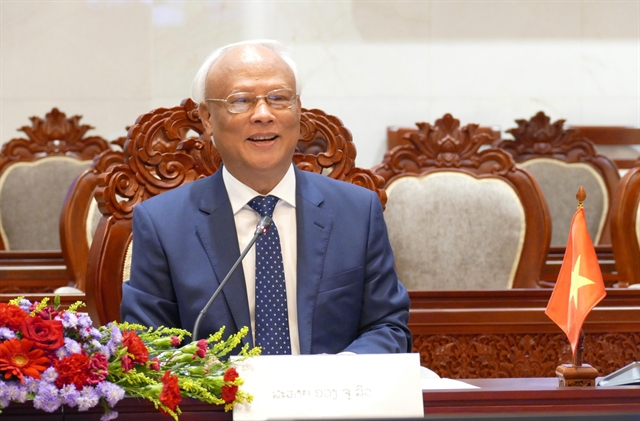 Society
Society

During the 300 continuous days that Nguyễn Tri Ân spent on Hồ Chí Minh trail in Hà Tĩnh Province in the war in 1968, he suffered 293 bombings and was almost buried alive 15 times.
 |
| People offer incense at the Đồng Lộc T-junction monument in Hà Tĩnh Province. — VNS Photo Đoàn Tùng |
HÀ TĨNH — During the 300 continuous days that Nguyễn Tri Ân spent on Hồ Chí Minh trail in Hà Tĩnh Province in the war in 1968, he went through 293 bombings and was almost buried alive 15 times.
Luckily, he survived them all.
But from 1965 to 1968, another 16,000 Vietnamese soldiers sacrificed themselves in this area, on the Khe Út – Khe Giao section of the trail just south of Đồng Lộc T-junction
During the war, Đồng Lộc intersection was the most important site on the legendary Trường Sơn – Hồ Chí Minh trail. Trucks carrying soldiers, food, arms and munitions from the north to battlefields in the south passed through the junction.
From 1965 to 1968, the US army dropped nearly 50,000 bombs and fired tens of thousands of missiles on the Đồng Lộc T-junction in Đồng Lộc Commune to cut off the transport route to the southern front.
All human resources were mobilised by the Vietnamese Government at that time to ensure the road would be clear.
Ân, who volunteered to serve the army at the age of 20, was assigned the task of detecting and clearing bombs along the southern section of the Đồng Lộc intersection along with two other soldiers.
“Typically, they would drop bombs for 28 days in a row, with more than 800 bombs of all kinds,” he said.
“We had to hear the sounds of bombs all day and night,” he said.
Obviously, they wanted to turn the intersection into a dead point where no one and no vehicles could cross, Ân added.
But there were people who were fearless of death and danger, who came to clear the mess so the transportation wouldn’t be disrupted.
“Wherever they bombed, we came after that and cleared the wreckage and detected unexploded bombs to open the way,” he said.
Death was not in their minds at the time, since they were busy focusing on defusing as many bombs as possible.
“I detected and cleared 545 bombs,” Ân, who was granted the title “Labour Hero”, proudly said.
Hà Thị Thực, a comrade who joined Ân and others in the 1968 task, said she would never forget those days.
“The war was intense but the youth volunteer force was determined and never afraid. The spirit was like this: our blood can stop running, our hearts can stop beating, but the transportation can’t be cut off,” she said.
With such determination, while levelling bomb craters, 10 young female volunteers on the Hồ Chí Minh Trail were buried alive by bombs dropped by US forces.
At noon on the 15th day since the bombing started, a bomb fell very close to the mouth of the cave where these female transport volunteers, aged from 17 to 24, were working, trying to level bomb craters to reopen the intersection.
Their sacrifice remains immortal and has become a symbol of Vietnamese heroism.
After the national reunification day, the Hồ Chí Minh Communist Youth Union Central Committee decided to build a victory monument at Đồng Lộc T-junction. The intersection has now become a relic site. On the hill, surrounded by pine trees, a monument was erected on which the names of the 10 heroines are engraved.
Bomb shells collected from the Đồng Lộc battlefield were arranged into the shape of a plane plunging from the sky.
A special art performance together with a national ceremony will be held on the night of July 21 at the Đồng Lộc T-junction relic site to commemorate the 50th anniversary of the victory.
A gathering for war veterans and former youth volunteers, as well as a requiem for fallen soldiers, will also be scheduled. — VNS




